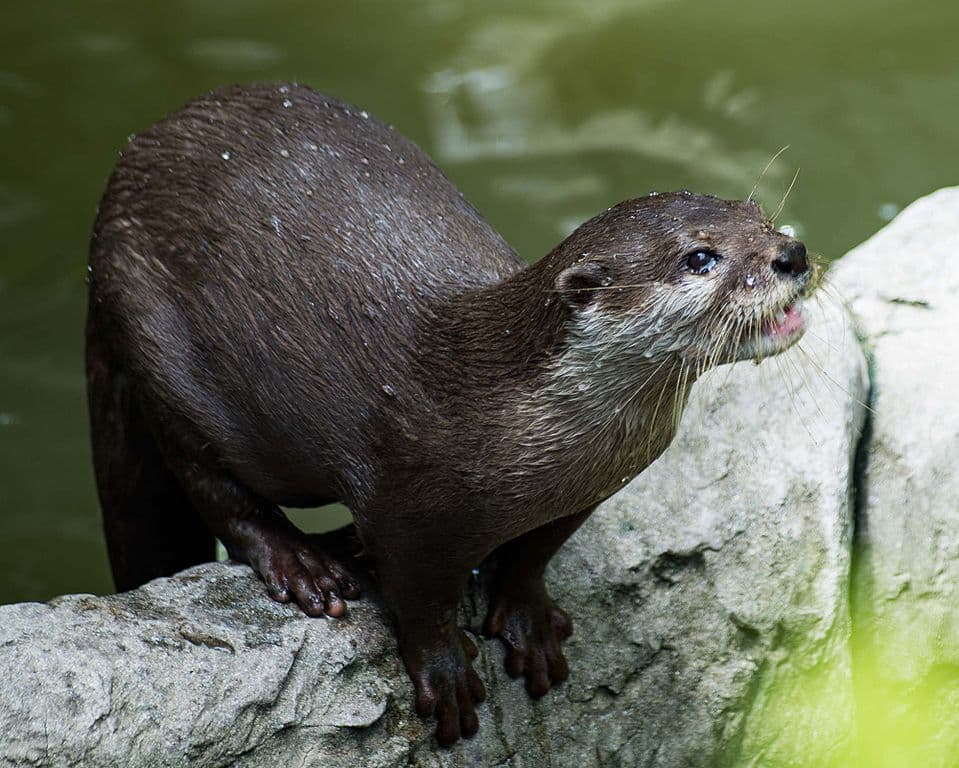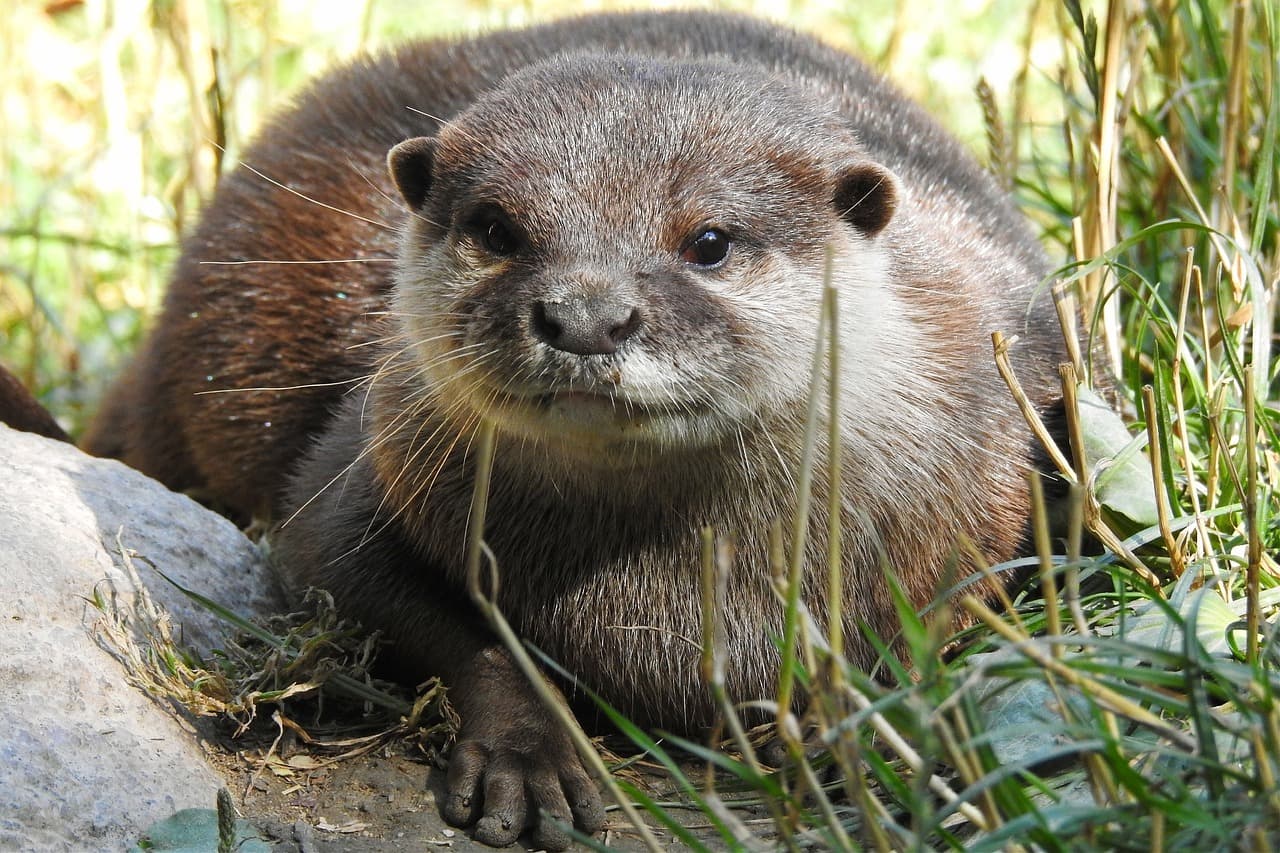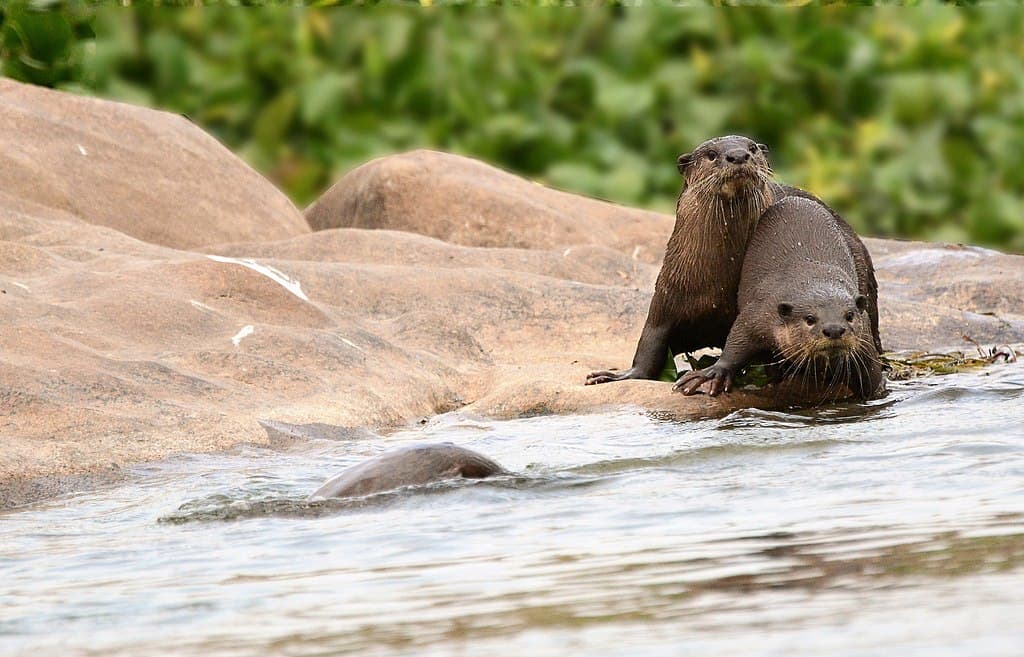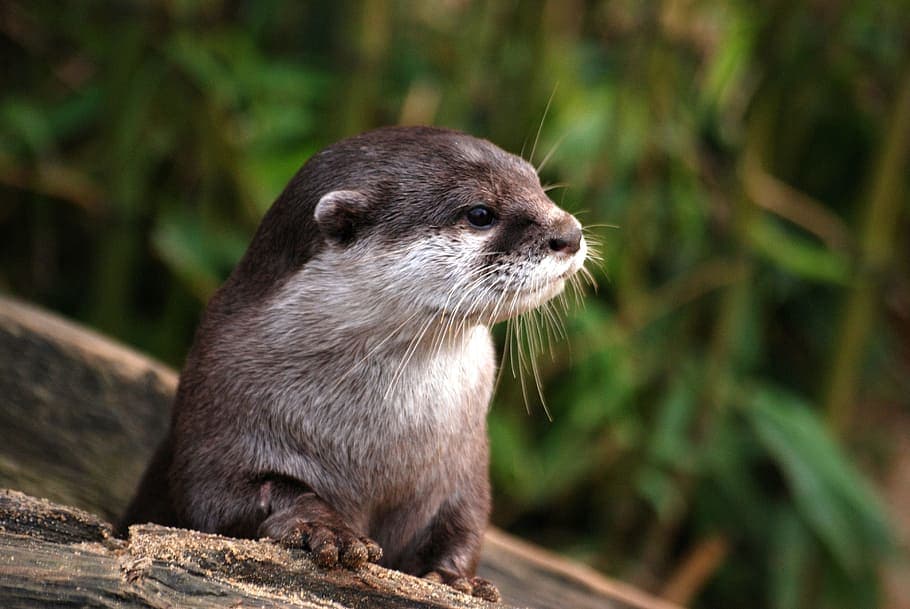Cambodia is home to many animals, and there are 3 otter species native to this small country today. This cute animal is actually found on every continent except Antarctica and Australia. All otters are incredible hunters and swimmers, and they are very clever. In this short article, we are going to discuss the 3 otter species in Cambodia. Let’s see if you know or have seen any of them before.
Hairy-Nosed Otter (ភេរោមច្រមុះ)

Being very rare; however, a family of hairy-nosed otters was seen crossing the road in the Angkor area in Siem Reap yesterday. An adorable family of 5 was playing in the water before they crossed the road and ran around. Many tourists captured this sweet moment and shared the photos and videos on social media on July 6th, 2023.
The hairy-nosed otter is a semiaquatic mammal endemic to Southeast Asia, specifically occurs in Cambodia, Indonesia, Malaysia, Thailand, and Vietnam. A hairy-nosed otter is chestnut to chocolate brown in color, and it has a white jaw, throat, and upper lip. Their habitats are both coastal areas and freshwater such as canals, mangrove forests, peat swamps, and shallow coastal waters. Where they live, they feed on crustaceans, fish, mollusks, and water snakes. Some individuals also forage in drainage canals and ponds during the dry season as well.
This least known and rare otter species facing threats due to natural resource loss and poaching. Crop cultivation, fishing, habitat destruction, hunting, and pollution also play a great part in their population decline. Hairy-nosed otters are also classified Endangered on the IUCN Red List as well.
Oriental Small-Clawed Otter (ភេតូច)

The oriental small-clawed otter is the smallest otter among the 13 species, and yes they have small claws. This otter species also has webbing between their toes that provides them with incredible dexterity. At the same time, they also have sensitive digital pads that help them feel in murky water or under rocks. That way, they can find food such as amphibians, fish, insects, and reptiles. More than that, their claws also allow them to easily dig in mud and sand at the shorelines for crabs and shellfish.
Oriental small-clawed otters live in Indonesia, Southeast Asia, southern China, southern India, and the Philippines. In those countries, these small otters are common in areas such as freshwater wetlands, mangroves, marshes, rice paddies, rivers, seacoasts, and small streams. Where they live, they also share their habitats with 3 other species including Eurasian, hairy-nosed, and smooth-coated otters. While being small, this otter species is very vocal. They have at least 12 different vocalization vocabularies to alert, contact, greet, summon, and more among their group members.
The oriental small-clawed otters live in a family or groups of up to 15 to 20 individuals. Despite the group members, they hunt by themselves. This species is listed as Vulnerable on the IUCN Red List due to their population decline. Oriental small-clawed otters are the most sought-after otter species for illegal pet trade in Asia. The threats to their numbers are habitat loss, hunting, poaching, and pollution. Poachers hunt them for their fur while deforestation causes destruction to their habitats.
Smooth-Coated Otter (ភេខ្លួនរលោង)

True to its name, a smooth-coated otter has short and sleek fur that appears shining and velvety. This otter species has short and strong legs with large webbed feet that bear strong claws. As great swimmers, they use their webbed feet to swim and hunt fish. Besides that, they also feed on amphibians, insects, and snakes. During the rice planting season, they also hunt rats in rice fields.
The smooth-coated otters are more often been recorded in saltwater near the coast, especially on smaller islands. However, they still inhabit areas where fresh water is plentiful. So they are also common in lakes, rice paddies, rivers, seasonal swamps, and wetlands. Where they are, they live in groups of up to 11 individuals and they usually rest on sandy riverbanks. Among their groups, smooth-coated otters communicate with each other through vocalizations such as chirps, wails, and whistles.
Not different from the other two otter species in Cambodia above, this one also faces threats. The main threats to their population are illegal trapping for fur trade, poaching, wetland destruction, and wetland loss. Those destructions are for settlements such as agriculture and hydroelectric projects. At the same time, their water courses are being polluted by pesticides which affect their food sources and life.
Related Post: Flying Lizard Species In Cambodia
